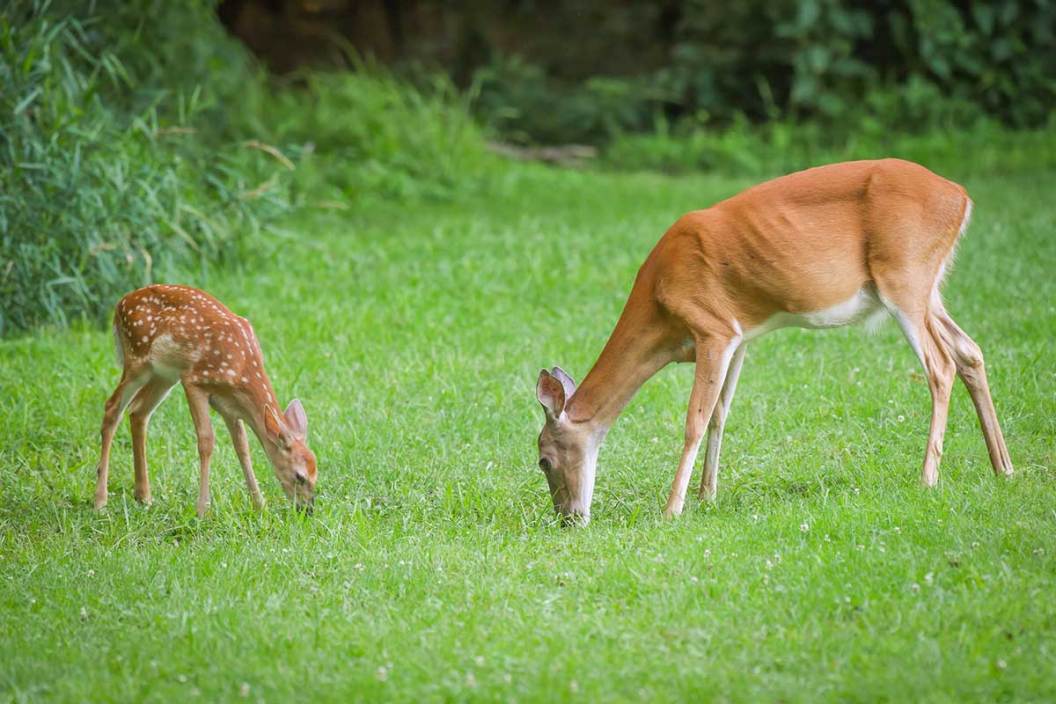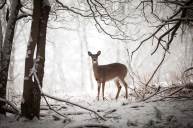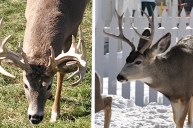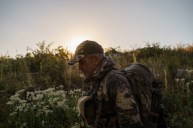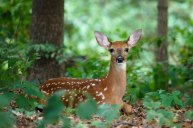When considering the gestation period of a whitetail deer, you might apply several questions and trains of though. How long after breeding does it takes for a fawn to be born? How can a gestation period shift depending on the time of year? Most hunters don't know this, and it could be an important piece of information if they're able to apply it to their overall hunting and deer management strategy.
Though it's tough to come up with an exact number, knowing the general gestation periods for whitetail does, and anticipating what it means when fawns are finally birthed, can have an impact on your deer herd and help lead to better overall conditions for hunting and land stewardship success.
How Long is the Deer Gestation Period for Whitetails?

The average gestation period of a whitetail deer is around 200 days, or seven months. There are many factors to consider while thinking of its importance. Most deer inhabit colder climates, thus giving a shorter window for a baby deer to grow and become tolerant to these environments. Thus, whitetail deer are generally born from the end of May through July. This time frame gives them enough time to possess the essential fur coats, feeding patterns, and other life skills to endure the harsh winter months ahead which can be brutal, even for a mature deer.
When Do Whitetail Deer Breed?
Breeding season, known as "the rut" among most deer hunters, happens during fall and winter. Changes in the day lengths, rainfall and climate trigger hormones that begin the mating season. The estrus period for female deers doesn't last very long-only a few days. Does then have the rest of winter and early spring to prepare for birth.
A doe will generally have her first deer when she is about two years old. Depending on food supply, a typical doe will have two fawns every year for five years. Older females may have more than two or three fawns a year, however. No wonder deer herds are so big!
Factors Affecting Deer Gestation

Just like humans, outside factors affect reproduction in deers. For deers, it's all about timing.
Food is the most important resource during deer pregnancy. During the winter and early spring, pregnant need to consume rich nutrients and food to produce high-quality milk to support the growth of the fawns. Poor nutrition in the pregnant winter months may delay parturition (childbirth, but y'know, for deer.) Obviously, if the fawns were born during the winter months, they would have very little chance of survival. The spring offers plenty of lush vegetation that provides ample cover from predators looking for an easy meal. But a delayed spring birth means less of that food available for the newborns.
Social status and age also determine which female deers can breed early. This luxury generally belongs to older does.
Importance for Hunters and Land Stewards
Because of all the odds against fawn conception, growth, and predation, some may even consider the whitetail deer in danger of being wiped out. That's not the case, and the gestation period duration is part of what's sustaining their populations and continuing to see them thrive on the North America landscape,
As a side note, keeping predators at bay is an excellent way to give fawns an even better chance of succeeding. Typically predators can be trapped or hunted year around. Check your local laws about hunting predators, which makes for better control. Granted, you're not going to eliminate the threat, but you can reduce it.
We'd be missing a big part of the picture if we didn't discourage against hunting does during gestation season, even if it's during legal hunting season. It usually takes at least three months of gestation for a doe to physically look pregnant. Taking out deer before they can reproduce does significant harm to the strength of deer populations. The same goes for does with young fawn.
All in all, the gestation period of a whitetail deer is perfectly designed to give the species ample opportunity to thrive and grow in their respective habitats. Honestly, it couldn't have been planned any better.
